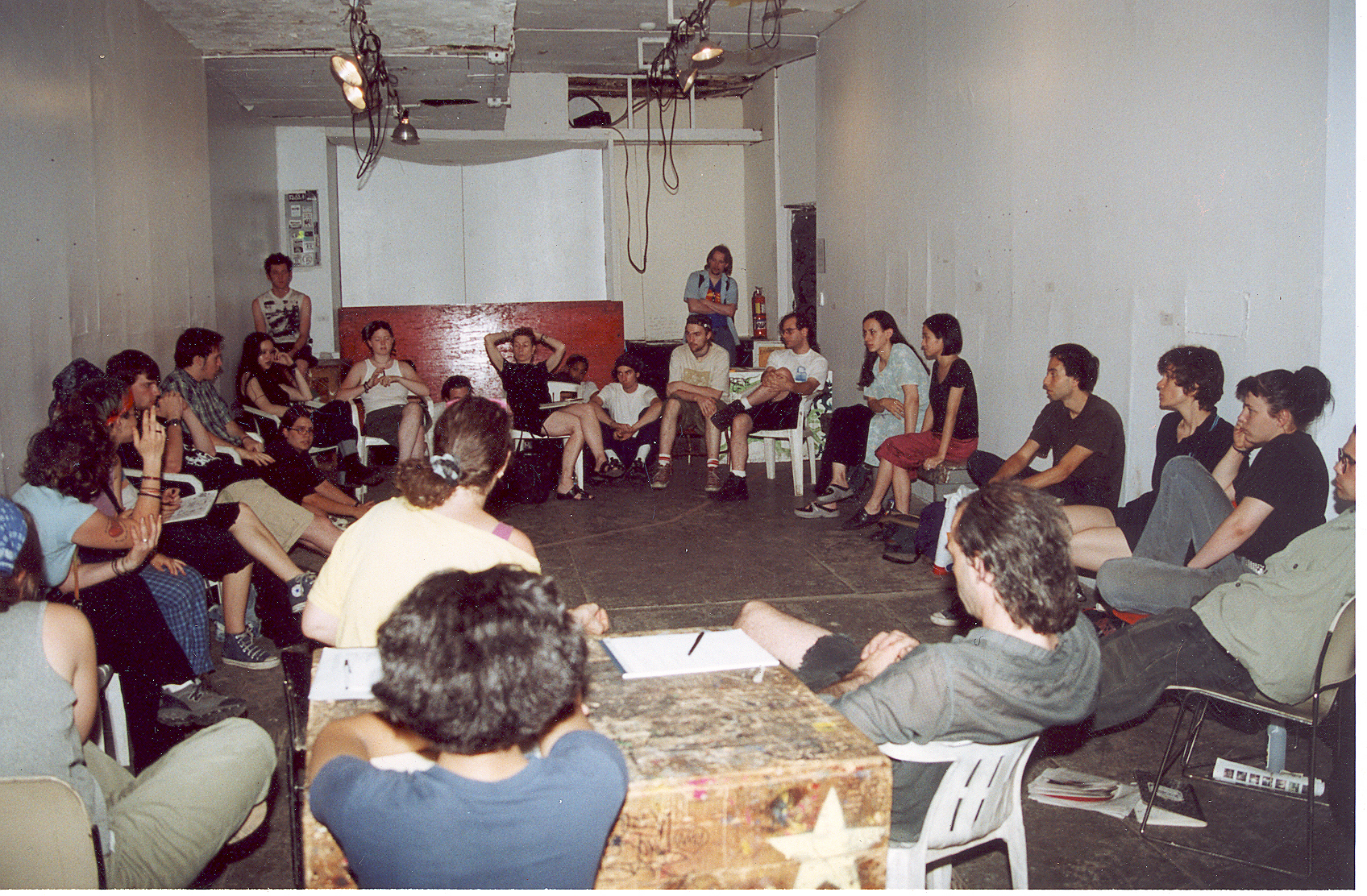Work on the long-awaited building project for the Lower East Side’s historic art squat ABC No Rio began at the end of last month, opening a new chapter for the collective-turned-nonprofit after years of delays from mounting construction costs. Expected to partially-open in mid-2026, the new four-story facility will finally allow the group known for its mutual aid work and anti-institutional ethos to return to its original address at 156 Rivington Street since the building was initially demolished eight years ago.
The new energy-efficient building will be constructed in two stages, featuring expanded galleries in the lower floors and new offices and arts facilities in the upper floors, Steve Englander, the nonprofit’s director told Hyperallergic. He said he doesn’t have any concerns that accumulating costs will continue to impede the project’s timeline.
“Basically, we’re looking at 20 months for phase one, and then how we approach phase two is still to be decided,” Englander said.
Alongside $1.7 million raised by the organization, $275,000 from the Lower Manhattan Development Corporation, and funding from groups like New York State Council of the Arts, the project is being overwhelmingly financed by the City, which allocated $21 million through the Department of Cultural Affairs, the borough president’s office, and city council members. The support from city officials, who gathered with members of ABC No Rio at the on-site breaking ground ceremony last month, contrasts with the violent evictions at the hands of riot police and dozens of arrests faced by the arts collective in the years after its founding in 1980.
“We were warned that if the cops knocked on the door, we should slam the door in their faces and bolt it,” longtime ABC No Rio volunteer Mike Estabrook told Hyperallergic. Estabrook first joined the group in the mid-’90s when it was still an illegal squat. That all changed in 2006, when ABC No Rio members purchased 156 Rivington Street from the city for a dollar, officially acquiring the rights to the site, by then a crucial convening point for three generations of group volunteers.
But even without the threat of eviction looming beyond the front door, the collective struggled to maintain the deteriorating tenement building, which was plagued by leaks, collapsing infrastructure, and pests. Longtime ABC No Rio volunteer Garry Boake, who runs the collective’s silkscreen print shop, recalled how group members used to routinely assemble buckets to catch roof leaks.


“There was one day that it was raining so hard that inside the print shop, it was misty. It looked like a rain forest,” Boake said. Following the old building’s demolition, he has been operating ABC No Rio’s print shop “in exile” out of a windowless Bushwick basement split with a band rehearsal space. Depending on Boake’s schedule, it is generally open to the public Thursday through Saturday on an appointment basis for a low fee.
The group’s other arts programs have also relocated during the interim period. The zine library, which volunteer librarian Ariel Kleinman told Hyperallergic holds “about 14,000 zines” has relocated to the nearby Clemente Soto Vélez Cultural and Educational Center. Because the center is undergoing renovations of its own, Kleinman said that the library is also running on an appointment-only basis, which can make “some people a little scared to come visit.”

Its signature experimental arts shows and performances have also moved to alternate venues, hosted by partner spaces like Bullet Space, another former squat in the Lower East Side, and Flux Factory, an artist-led space in Long Island City.
“It was really kind of amazing and a huge loss to lose that building because of just how much artwork was in it and on it,” ABC No Rio volunteer Vandana Jain told Hyperallergic, remembering the original headquarters. By its end, the space had become a living archive of work, covered from floor to ceiling in years of layers of art.
As the group enters this unknown chapter in the ever-changing Lower East Side neighborhood, its future remains dependent on a new generation, which leaves some with uncertainty. Still, its older members are confident the collective will remain true to its roots.
“We’re going to have a very new building, and that’s going to come with its own set of needs, so that’s where the real concern is,” Jain said. “But at this point, there’s still enough people involved who know how it works.”




